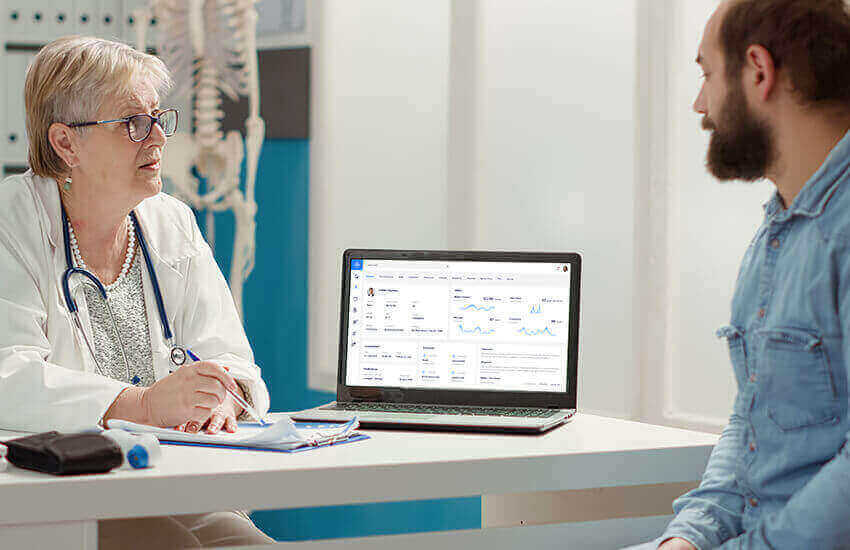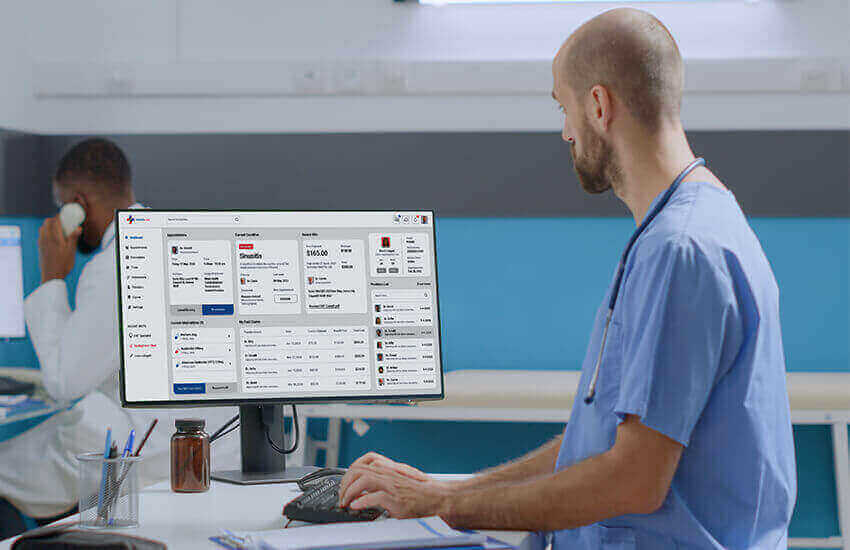Electronic medical records, or EMR systems, contain important patient healthcare information. This includes insurance coverage, demographic information, allergies, immunizations, previous diagnoses, treatments, medications prescribed, etc. While all this information does help providers serve their patients better, it could also help the organization. That is where EMR analytics becomes important.
A medical organization carries out numerous operations in addition to patient care. This involves the administration of human resources, billing, financial oversight, inventory management, and so forth. Since these activities ultimately revolve around patient care, analyzing it provides important insights into everyday operations. That is why EMR or EHR analytics has gained momentum in recent times.
How Does EHR Data Analytics Help Patients?

EHR systems store all the data about a patient’s symptoms, diagnosis, medications, treatment, and outcomes. Assessing this information using a healthcare data analytics solution will reveal insights about their medical condition that would otherwise not be obvious to providers. For example, a man’s diet, lifestyle, and symptoms will help reveal if he is more prone to chronic diseases like diabetes or heart disease.
Knowing if a person is more likely to contract a disease enables doctors to respond appropriately. Such an intervention in the early stages before the onset of symptoms goes a long way in improving medical outcomes. It follows the old saying – “Prevention is Better Than Cure.” If doctors know who is at a higher risk of disease, they can respond better and avert it. This kind of predictive approach can revolutionize patient care and be made possible through healthcare analytics.
For Epidemics

An epidemic is an outbreak of a disease that affects many people in a certain region, community, or part of the population. In other words, many people contract a disease relatively quickly. Dealing with epidemics is a major challenge for public health experts and providers. This is because they have to find a way to cure many people and curb the spread of the disease to more people. Medical data analytics with EMR/EHR is a potent tool for responding to epidemics.
Epidemics begin as disease outbreaks with a certain specific set of symptoms that progress over time. It is only after some days or weeks that more and more people begin showing up with similar symptoms. The nature of their conditions would shed light on the origin of the disease and the way it spreads. Coupled with the timelines of infections and the emergence of symptoms, public health experts can develop an understanding of where the disease emerged and even zero in on the first patient. This helps them trace the outbreak’s origin and implement steps to curb it accordingly. All of this can be accelerated through the use of healthcare analytics solutions.
EHR and EMR systems contain all the information on patients. This includes their demographic data as well as their medical one. Assessing this information using healthcare analytics solutions considers factors like ethnicity, personal address, medical history, symptoms detected, a timeline of symptoms’ emergence and progression, present condition, and so on.
An analysis of multiple factors associated with the patients reveals patterns about the outbreak and progression of the epidemic, allowing doctors to trace its origins. In addition, public health experts can also find patterns in the actual patients themselves, which reveals if the disease affects a certain part of the demographic (old, young, males, females, etc.) more than others. These insights are vital for curing the disease and controlling its spread.
The United States is grappling with multiple epidemics, namely the opioid epidemic and the rampant spread of chronic diseases. Healthcare analytics using EMR or EHR goes a long way in helping public health experts and policymakers handle it better.
How Do EMR Analytics Help Medical Centers?

Hospitals and clinics must conduct non-clinical operations like medical coding, claims generation, payments processing, revenue cycle management, human resources administration, inventory management, etc. Most of these activities revolve around patient care, and EMRs contain important information about every patient.
Data such as health plans, occupation, medical history, previous treatments, prescriptions, payments, and reimbursements are also part of the patients’ information. Analyzing this lets administrators identify patterns like the top reasons for claim denials, most reimbursing payers, most-prescribed drugs, reasons for bottlenecks in documentation and compliance, problems in coding, and so forth.
The insights derived from analyzing day-to-day operations and patient care allow medical administrators to know where they can improve. In other words, they can identify which parts of the everyday workflows are inefficient and prone to errors. Such data-driven knowledge allows providers and administrators to optimize operations and improve patient experience.
The advantage of using healthcare analytics with EMR is that it reveals the areas of management that can be improved. This could include patient care, human resources, financial, and inventory management. Improvements in these areas ultimately translate into improving all aspects of the organization’s operations, patient care included. This is especially true in the case of large hospitals. The larger a hospital is the greater the complexity of its management. So, data-driven healthcare analytics eventually helps the organization better serve all its stakeholders.
EMR Analytics For Payers

Insurance payers offer medical coverage according to patients’ needs and structure their premiums accordingly. For example – a person with heart disease would have different coverage for services compared to someone suffering from an autoimmune disease. EHR analytics helps insurance payers know about patients’ conditions and relevant medical services. As a result, they are in a better position to know how much it would cost them to provide coverage for each patient.
The insights from knowing about patients’ medical histories allow insurance companies to modify or create health plans accordingly. This benefits them and the providers since neither would stand to lose money. Payers would know how much they need to reimburse for what services, and providers would know which services are covered and to what extent.
The growing problem of costs and chronic diseases across the country strains the payers and often results in people not receiving the coverage they need. On the other hand, providers, too, would need to juggle between clinical outcomes for patients and their insurance coverage. In light of this, EMR analytics goes a long way in helping payers adjust their health plans to suit patient requirements.
Conclusion
Data analytics has helped every industry boost its productivity and revenues. Healthcare is no different. The increasing digitization of workflows and the implementation of healthcare automation solutions signals major changes in the industry. Furthermore, the adoption of newer technologies for remote patient monitoring and telehealth solutions paves the way for increasingly larger datasets to be generated. In light of these changes, EMR analytics helps providers and senior medical executives make informed decisions about all aspects of operations.
The data generated will only increase as the healthcare industry adopts newer technologies and experiences innovations. As a result, solutions for EHR data analytics will play a major role in this decade and will go on to impact not just revenues but also patient outcomes.
References
OSP is a trusted software development company that delivers bespoke solutions as per your business needs. Connect with us to hire the best talents in the industry to build enterprise-grade software.

How can we help?
Fill out the short form below or call us at (888) 846-5382
Looking for software solutions to build your product?
Let's discuss your software solutions for your product in our free development acceleration call!
Get In Touch arrow_forwardDiscuss Your Project Handover with a team of expert Book a free consultation arrow_forward
About Author

Written by Riken Shah linkedin
Riken's work motto is to help healthcare providers use technological advancements to make healthcare easily accessible to all stakeholders, from providers to patients. Under his leadership and guidance, OSP Labs has successfully developed over 600 customized software solutions for 200+ healthcare clients across continents.

















